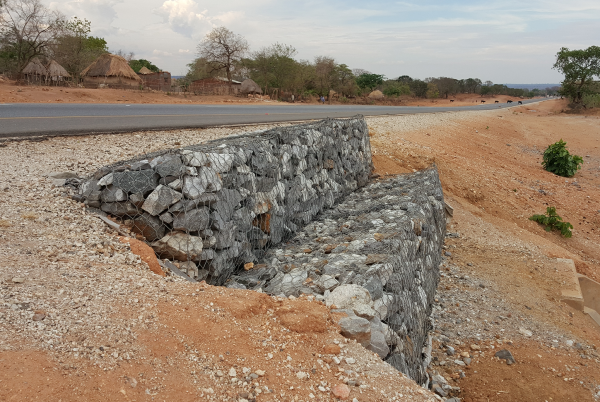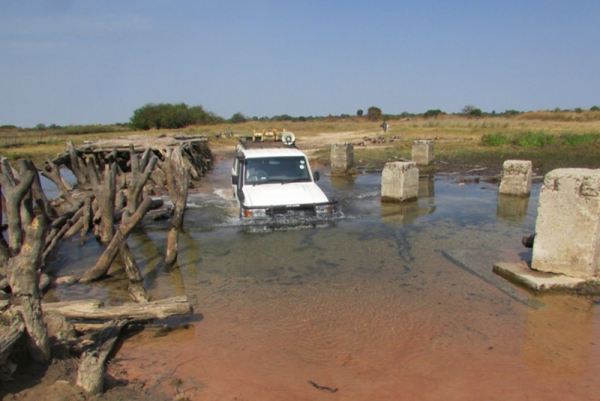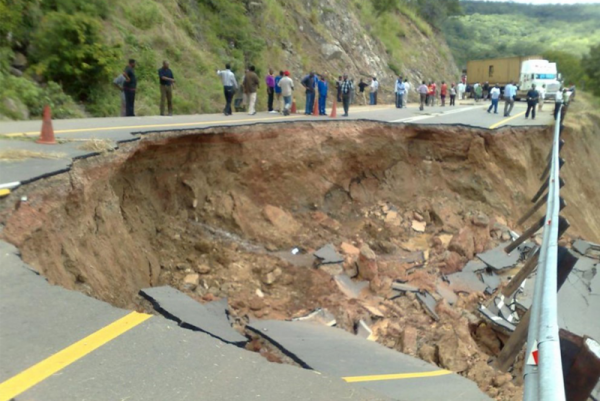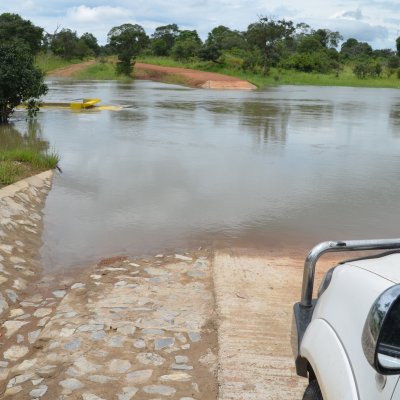NDF-sponsored Climate Vulnerability Assessment making inroads into new climate-resilient Zambia transport sector
Country-wide climate vulnerability assessment paves the way for Zambia's new resilient road system
Climate change is happening now, and globally our means of collecting, measuring and analysing climate impacts are advancing rapidly. But for countries like Zambia, experiencing more and more frequent extreme weather events, what has been missing is an accurate set of data and solutions that are geographically and technically adapted to the country’s own distinct conditions.
“While macro-climate studies give us a very useful backdrop in terms of our need to act, most of the output is in the form of averages,” says Zambia-based environmental resources expert, Adam Pope, Project Team Leader at NTU International, “but here on the ground, the devil is still in the detail, and understanding the extremes and what drives them and what effects they have is vital.”
The Zambia Climate Vulnerability Assessment (CVA), part of the Nordic Development Fund-financed Development of Climate Resilient Infrastructure Standards and Codes Project, has been focusing on those details, with a data collection and analysis program that has spanned the country’s existing road and bridge system. Drawing from these findings, the next step is to publish comprehensive road-sector climate adaptation guidelines to inform Zambian government decision-makers.
The time is now
“Climate change is really starting to hit home in Zambia,” affirms Nonde Musawa, Senior Manager, Planning, at Zambia’s Road Development Agency, who has been overseeing the project. “We’re not experiencing rainfall patterns the way we used to,” says Musawa, “with higher levels of rainfall in some parts of the country and severe drought or high temperatures in others.”
For the Zambian road system, increased rainfall has meant more landslides and washouts than before. And on main trunk roads, washouts don’t just stop traffic, they can bring the country’s entire economy to a standstill.
In response, Musawa sees an urgent need to revisit the country’s codes and standards for road building with the CVA providing the climate impetus. “This assessment comes at a very good time for us and is very important to the Zambian government, especially the Road Development Agency,” Musawa confirms, “because across the organisation we are all in agreement that a higher level of awareness, advanced planning and response to emergencies is needed.”
What kind of guidelines?
“In road and bridge construction it’s the little things that can often have the biggest impact,” advises Adilson Vilinga, National Deputy Team Leader, NTU International. “That means taking more care at the design phase, improving the embankments, improving erosion protection, even obvious things like the shape of the road.”
According to Vilinga, early information coming out of the CVA peer review process, underway now, is that new road carriageway slope guidelines for example will call for a minimum 5% camber gradient on either side on all-weather roads and 3% for sealed roads. “This will help ensure that water doesn’t stay on the road during intense rainfall,” explains Vilinga, who expects new guidelines also to bring a more robust hydraulic analysis of drainage structures and river-crossing structures and their catchment characteristics.
Vilinga can’t stress enough the importance of climate-resilient bridges in linking the nation’s transport system. “When bridges are more robust the whole transport network will be robust.”
Bridges in Zambia are mostly concrete or concrete and steel composite, and the focus will certainly be on increasing the capacity of bridges in more climate vulnerable sections of the road networks; as well as paying more attention to ensuring viable alternate routes exist to increase redundancy of the road network, thereby increasing resilience.
More robust road surfaces
The guidelines should also bring fresh scrutiny on the prescribed grade of bitumen for paved road construction. Vilinga hopes that in response to rising temperatures the current widely used 80/100 bitumen grade will be replaced by a more viscous and heat-resistant modified bitumen such as the 60/70 standard.
Road construction is also expensive and Vilinga is looking for more sustainable ways of sourcing and using local construction materials like gravel, particularly for unpaved roads, which make up about 70% of Zambia’s road system.
Opening up for innovation
While roads systems in Zambia are mostly managed by the Road Development Agency, they are constructed and maintained by private-sector actors. Vilinga sees performance sub-contracting for longer-term road construction and maintenance as a chance to push innovation, as sub-contractors are encouraged to come up with additional scope of their own in terms of climate-resilient practices. And this makes good business sense. “If you are bidding on a 10-year contract to construct and maintain a road system in a flood zone, then you’ll want to include some innovations that you know already will save you time and offset future expense,” Vilinga points out.
Before and after
Following the launch of the adaptation guidelines, scheduled for early next year, Musawa expects RDA to be much more prepared as a sector to address climate change impacts on Zambia’s road system.
“Ultimately, we are looking at installing climate resilient infrastructure across Zambia,” says Musawa. “That means good roads that will facilitate the movement of cargo, fresh produce and people safely from one side of the country to the other.”
Given the high levels of economic hardship associated with Zambia’s outlying areas, Musawa also sees a more robust transport system as a pathway to bringing people out of poverty. With reliable, climate-resilient road systems extending right across the country, it could even stimulate agriculture in remote regions and improve the wellbeing of those communities.
“Previously government would rely on word of mouth or local experience to strengthen and adapt road systems,” says Pope. “But this project brings new tools to transform vulnerability into resilience by disseminating information to inform consultants, designers and decisionmakers, not least on the implications for overarching policy, planning and asset management.”
Guidelines alone not enough
While the adaptation guidelines can effectively be seen as a licence to act, Pope points out that alone they will not be enough.
“Yes, you can put the findings into road construction contract documents,” says Pope, “but unless everyone in the system is aware of them and can apply them to decision-making across the agency, through programming, budgeting and investment formats, it will be difficult to create lasting change.”
Pope cites the need for a country-wide climate data collection system as a case in point. During the assessment phase, the team visited each of the Zambian provinces, asking them to bring examples of climate impacts on their local road systems.
“The results were variable,” Pope recalls. “Some had a lot of data, others had none.” And there were no means to differentiate whether an issue was climate related or the result of other factors like poor design or maintenance.
“To effectively inform decision making, reporting really needs to be standardised and focused on climate issues from the grass roots up and through the whole system.” Pope asserts.
In support of this, the other big question the study tackles is how to effectively embed the new guidelines into Zambia’s institutional systems? And to that end, the team is applying the new material to an extensive training program to support the project objective of making the whole network resistant to climate change, as well as adaptable to extreme and unforeseen events.
What about the challenges?
On the subject of unforeseen events, obviously Covid-19 came as an unwelcome surprise to the project. Most of the plans for 2020 involved hands-on workshops and field trainings which had to be cancelled or postponed. However, there were some unexpected upsides in the shift to Zoom-based meetings and trainings, which helped the team get connected to the furthest reaches of Zambia’s remote areas in ways not previously possible.
“Even though face-to-face communication is still very good, the pandemic brought unexpected upsides in terms of getting more project information to more people,” Pope recalls. The training can now reach stakeholders anywhere with an Internet connection, including some places that would have previously taken weeks to travel to, and at great expense.
“Again, the key word is adaptation,” says Pope.




